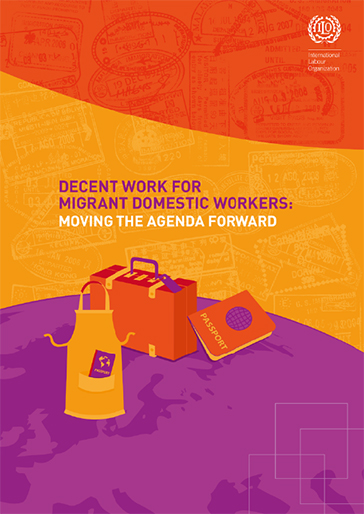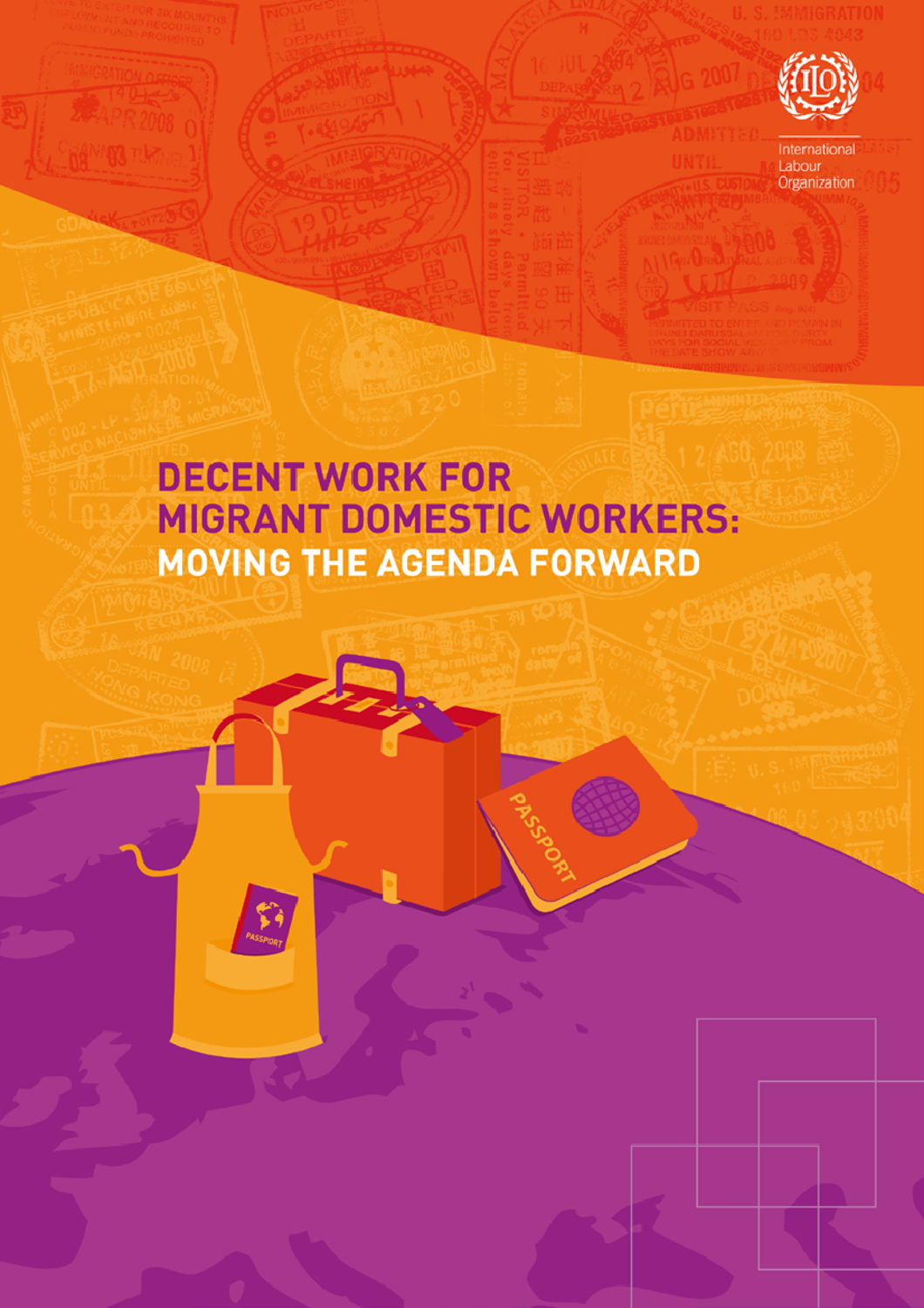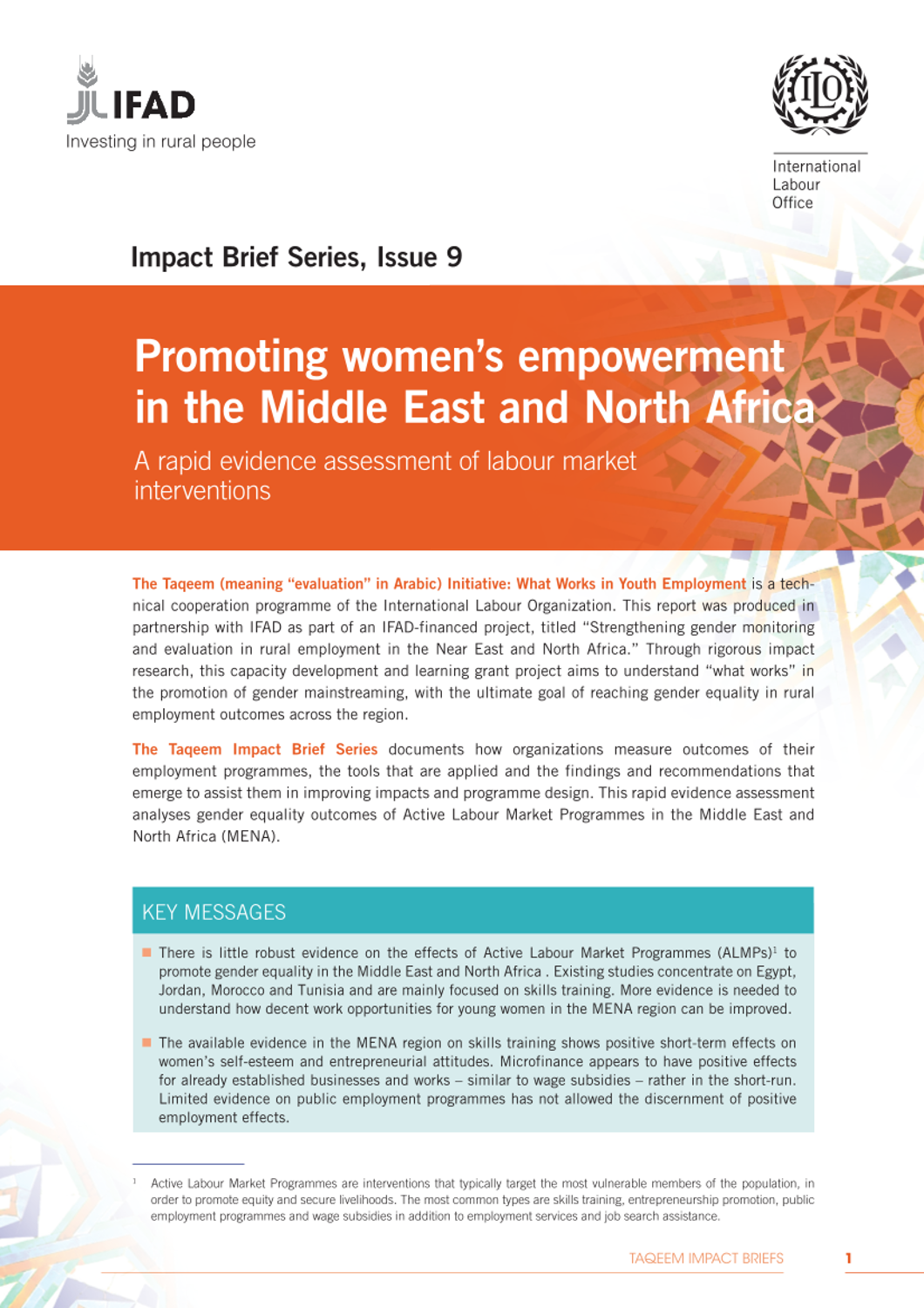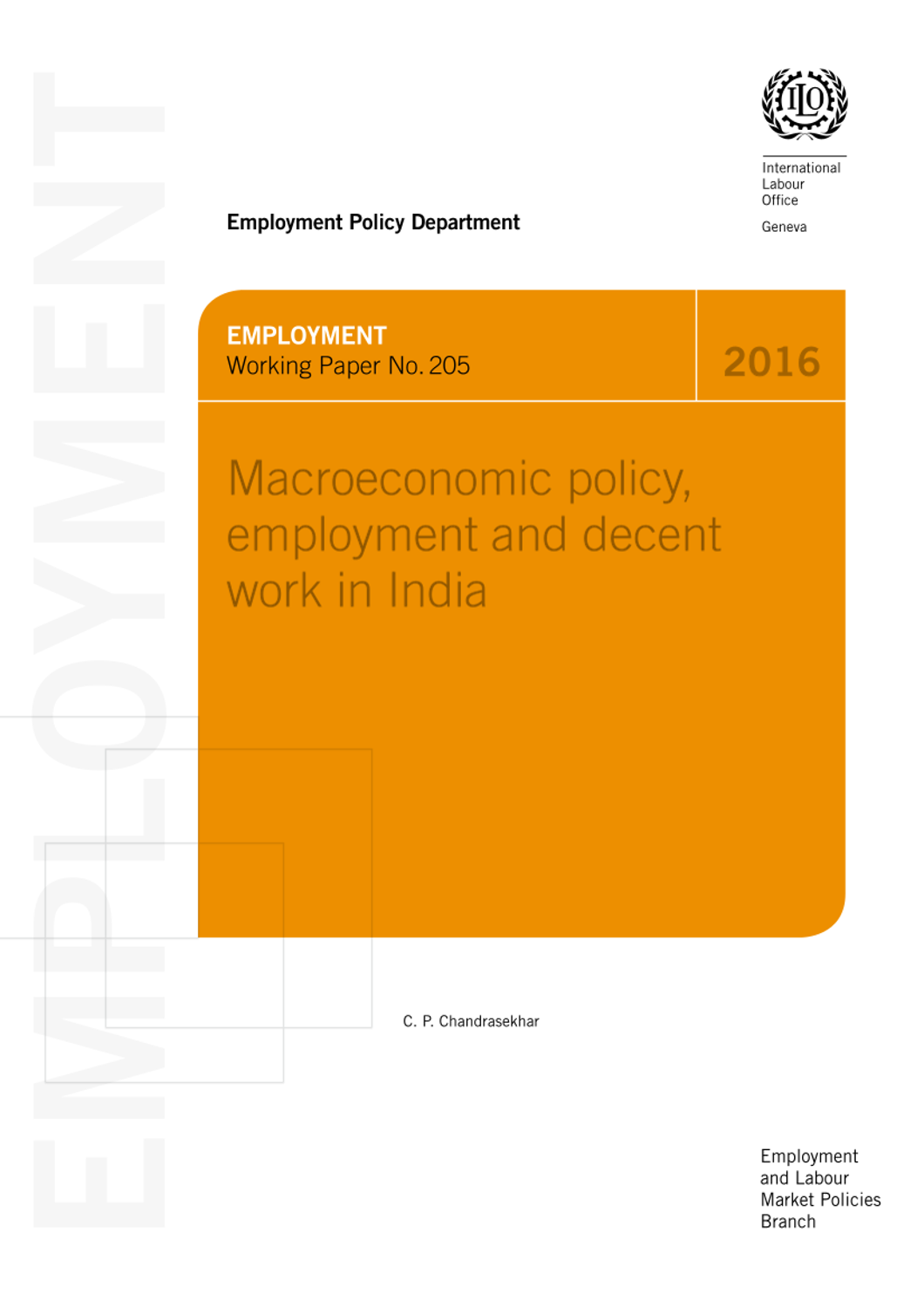
연구보고서
Decent work for migrant domestic workers: moving the agenda forward
- 청구기호
- Report 2016-11C
- 발행사항
- Geneva : ILO, 2016
- 형태사항
- 108 p :. PDF file ;. 4,154 KB
- 서지주기
- Includes bibliographical references
- 일반주기
- This report is part of a broader ILO strategy to promote Decent Work for Domestic Workers. It builds on knowledge generated in the context of the European Union-funded Action Programme on Migrant Domestic Workers and their Families (2013–2016)
- ISBN
- 9789221312765
- 바로가기
소장정보
| 위치 | 등록번호 | 청구기호 / 출력 | 상태 | 반납예정일 |
|---|---|---|---|---|
이용 가능 (1) | ||||
| E0002550 | 대출가능 | - | ||
이용 가능 (1)
- 등록번호
- E0002550
- 상태/반납예정일
- 대출가능
- -
- 위치/청구기호(출력)
책 소개
The report analyses trends and patters in the migration for domestic work at global, regional and corridor levels and presents good practices and lessons learned in the areas of skills development and recognition, recruitment, collective action and voice. It offers key guidance and recommendations for improving migration policies, awareness raising campaigns and capacity building programmes for domestic workers, with the objective of leveraging better working conditions for migrant domestic workers with a view to realizing the 2030 Sustainable Development Goals.
목차
Foreword
Acknowledgements . 9
Executive summary
Acronyms . 21
Introduction
Chapter 1
Migration for domestic work: Global and regional overview
1. Size and composition of the domestic work sector globally . 25
2. The global care crisis and international migration . 26
2.1 Women’s labour force participation and unpaid home-based care and domestic work . . . . . 26
2.2 Ageing, life expectancy, fertility rates and social policies . . . . . . . . . . . . . . . . . 28
2.3 Women migrating in search of better opportunities . . . . . . . . . . . . . . . . . . . . . 29
3. Migration regimes for domestic workers across regions . 30
3.1 Migrant domestic workers in Africa . . . . . . . . . . . . . . . . . . . . . . . . . . . . . . . . . 31
3.2 Migrant domestic workers in the Arab States . . . . . . . . . . . . . . . . . . . . . . . . . . 32
3.3 Migrant domestic workers in Asia . . . . . . . . . . . . . . . . . . . . . . . . . . . . . . . . . . 34
3.4 Migrant domestic workers in Europe . . . . . . . . . . . . . . . . . . . . . . . . . . . . . . . . 37
3.5 Migrant domestic workers in Latin America . . . . . . . . . . . . . . . . . . . . . . . . . . . 40
Chapter 2
Protecting domestic workers along the migration cycle: What role for governments?
1. The international legal framework governing domestic work and its monitoring . 43
1.1 International labour standards . . . . . . . . . . . . . . . . . . . . . . . . . . . . . . . . . . . . . 43
1.2 Relevant ILO non-binding principles and guidelines . . . . . . . . . . . . . . . . . . . . . 45
1.3 The complementarity of international instruments and the regular monitoring of ILO Conventions . . . . . 46
2. Protecting migrant domestic workers along the migration cycle: National laws and policies . 48
2.1 Countries of origin: The opportunities and challenges of mainstreaming domestic workers in foreign employment policies . 48
2.2 Countries of destination: The long road to balancing labour rights and regular channels for migrant domestic workers . . . 51
2.3 Protection is a shared responsibility . . . . . . . . . . . . . . . . . . . . . . . . . . . . . . . . . 56
Chapter 3
Gaining insight into the compliance gap: The Limits of awareness raising
1. Introduction . 59
2. Knowledge and practices of employers . 61
2.1 Ethnicity or nationality of the employer . . . . . . . . . . . . . . . . . . . . . . . . . . . . . . 61
2.2 Nationality of the worker . . . . . . . . . . . . . . . . . . . . . . . . . . . . . . . . . . . . . . . . . 62
2.3 Income, education levels and household characteristics . . . . . . . . . . . . . . . . . 63
2.4 The worker’s occupational profile . . . . . . . . . . . . . . . . . . . . . . . . . . . . . . . . . . 64
2.5 Member of the family or worker? . . . . . . . . . . . . . . . . . . . . . . . . . . . . . . . . . . . 64
3. Knowledge, attitude and practices of workers . 65
3.1 Attitude of workers towards their working conditions . . . . . . . . . . . . . . . . . . . . 65
3.2 Lifecycle of a migrant domestic worker in the country of destination . . . . . . . . . 68
4. Conclusion . 69
Chapter 4
Unseen, Uncosted, and Unwaged: The importance of skills’ development and recognition for domestic workers across borders
1. Introduction . 71
2. Recognizing the expanding portfolio of migrant domestic workers by linking wage increases to skills level and complexity . 72
3. Developing and recognizing the vocational and transversal skills of domestic workers .73
4. Labour rights are the cornerstone of orientation and skills’ programmes . 76
5. Improving skills’ matching in countries of origin and destination . 77
6. Developing and recognizing the skills of domestic workers across borders and promoting the upward mobility of returnees . 78
7. Conclusions . 81
Chapter 5
Reducing the costs of labour migration through fair recruitment practices
1. Introduction . 83
2. A diverse and fragmented recruitment industr . 84
3. The need to regulate labour recruiters . 87
4. Models for addressing key issues and challenges in the recruitment industry . 88
4.1 Using agreements and joint and several liability schemes to prevent abuses . . . 89
4.2 Establishing procedures for the monitoring of recruiters and investigation of complaints, alleged abuses and fraudulent practices . . 90
5. Recommendations for protecting migrant domestic workers and preventing their abuse . 91
5.1 Licensing requirements . . . . . . . . . . . . . . . . . . . . . . . . . . . . . . . . . . . . . . . . . 91
5.2 Registration schemes . . . . . . . . . . . . . . . . . . . . . . . . . . . . . . . . . . . . . . . . . . . 91
5.3 No fees charged to domestic workers . . . . . . . . . . . . . . . . . . . . . . . . . . . . . . . 91
5.4 Encourage good practices by PEAs in compliance with the Private Employment Agencies Convention and Recommendation . 92
5.5 Expanding fair models of recruitment beyond PEAs . . . . . . . . . . . . . . . . . . . . . 93
6. Conclusion . 94
Chapter 6
Domestic workers organizing across borders and winning rights
1. Introduction . 95
2. A typology of migrant domestic workers’ organizations . 96
2.1 Women migrant domestic workers forming and joining trade unions . . . . . . . . . 96
2.2 The association model of organizing . . . . . . . . . . . . . . . . . . . . . . . . . . . . . . . . 98
2.3 Collaboration between the association and union models . . . . . . . . . . . . . . . . . 99
2.4 International alliances and organizing . . . . . . . . . . . . . . . . . . . . . . . . . . . . . . . 101
3. Conclusions . 105
Bibliography



